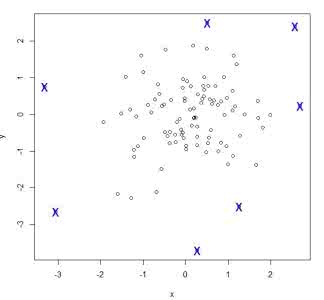Log data anomaly detection is a core component in the area of artificial intelligence for IT operations. However, the large amount of existing methods makes it hard to choose the right approach for a specific system. A better understanding of different kinds of anomalies, and which algorithms are suitable for detecting them, would support researchers and IT operators. Although a common taxonomy for anomalies already exists, it has not yet been applied specifically to log data, pointing out the characteristics and peculiarities in this domain. In this paper, we present a taxonomy for different kinds of log data anomalies and introduce a method for analyzing such anomalies in labeled datasets. We applied our taxonomy to the three common benchmark datasets Thunderbird, Spirit, and BGL, and trained five state-of-the-art unsupervised anomaly detection algorithms to evaluate their performance in detecting different kinds of anomalies. Our results show, that the most common anomaly type is also the easiest to predict. Moreover, deep learning-based approaches outperform data mining-based approaches in all anomaly types, but especially when it comes to detecting contextual anomalies.
翻译:日志数据异常是信息技术操作人工智能领域的核心组成部分。 然而,大量现有方法使得很难选择适合特定系统的方法。 更好地了解各种异常,以及哪些算法适合检测这些异常,将支持研究人员和信息技术操作者。 虽然对异常现象有一个共同的分类方法已经存在,但尚未具体应用于日志数据,指出该领域的特点和特殊性。 在本文中,我们为不同类型的日志数据异常提供分类方法,并在标签数据集中引入分析此类异常现象的方法。 我们对三种通用基准数据集“雷鸟”、“精神”和“BGL”进行了分类,并培训了五种最先进的、不受监督的异常检测算法,以评估其在检测不同异常现象方面的性能。我们的结果显示,最常见的异常类型也是最容易预测的。此外,深层次的学习方法在所有异常类型中都超越了基于数据挖掘的方法,特别是在发现背景异常时。



